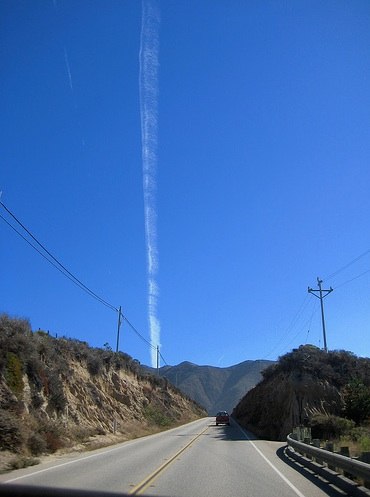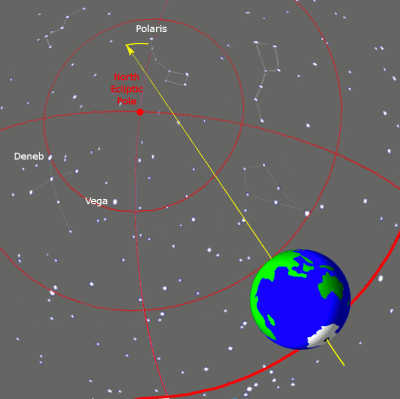Spherical
Wind resistance will alter the shape of any semi-liquid form being pulled by gravity.
Im sure nothing is actually spherical being dropped inside the atmosphere. Probably more oval.
....ok lets argue some of your "facts".....
If an object were dropped from the tip of the atmosphere, it would hit the ground within...lets say...a half hour.
60mi thick atmosphere
120mph terminal velocity
That means earth would basically have to rotate 360 degrees within 30 minutes for its centrifugal force to become stronger than gravity and "hurtle away" its own atmosphere.
Earths gravity = Centripetal Force....Is greater than....Earths rotation = Centrifugal Force
Earth Centrifugal Force is already extremely weak. Then take into consideration, your talking about its affects on the atmosphere (highly energetic gaseous molecules) which is rotating with earth due to viscous drag. Then take into account the mass of gaseous molecules is extremely small.
What you end up with are incorrect assumptions and calculations by Dr. Shaban
angular velocity is based on angular momentum which is based on....mass
the higher the atmosphere altitude the thinner is gets which means it has less mass...which reduces the angular velocity.
Unless that rotating body (atmosphere) is extremely light, exerting very little centrifugal force. Not to mention the higher the altitude, is the less amount of atmosphere above it, which reduces the pressure due to less atmospheric weight above it.
No. Gravity is stronger than the centrifugal force. Gravity wins.
Oxygen is heavier and naturally settles lower.
Throw a water balloon onto a pile of empty balloons. The heavy one sinks.
Earth does rotate. Gravity produces a centripetal force which counteracts earths rotational centrifugal force. Its all relative to everything within the earth which makes its interaction hard to measure, even more so for gas particles which practically have no mass.
The atmosphere does rotate with the earth at the same speed due to viscous drag.
The atmosphere is a gas, which means it does not react to angular velocity, gravity, or centrifugal forces to the same degree as solid mass (like us, or centrifugal pumps) does.
Scale is relative. Larger scale would require more time to attract and cohere.
Larger molten shots, need to be dropped higher. Tropical storms rain too much water from too short a distance. ECT...
Earth...had millions of years to complete the semi-liquid cohesion.
...................................
OK im done with the "Flat Earth Theory". Its as real as the tooth fairy.
Answer these questions...
What happens when you get to the edge?
Why has no one ever seen the edge?
Why does the sun rotate like a sphere? Its equator does infact rotate faster than its poles (like a giant sphere)
Wind resistance will alter the shape of any semi-liquid form being pulled by gravity.
Im sure nothing is actually spherical being dropped inside the atmosphere. Probably more oval.
....ok lets argue some of your "facts".....
If the Earth was rotating fast enough to complete 360 degrees every 24 hours, the atmosphere would long ago have been hurtled away.
60mi thick atmosphere
120mph terminal velocity
That means earth would basically have to rotate 360 degrees within 30 minutes for its centrifugal force to become stronger than gravity and "hurtle away" its own atmosphere.
Earths gravity = Centripetal Force....Is greater than....Earths rotation = Centrifugal Force
Earth Centrifugal Force is already extremely weak. Then take into consideration, your talking about its affects on the atmosphere (highly energetic gaseous molecules) which is rotating with earth due to viscous drag. Then take into account the mass of gaseous molecules is extremely small.
What you end up with are incorrect assumptions and calculations by Dr. Shaban
the angular velocity becomes greater at higher altitude
the higher the atmosphere altitude the thinner is gets which means it has less mass...which reduces the angular velocity.
So at 500 km (about 311 miles above sea level) the pressure of the atmosphere (gas) would be greater than at sea level....The greatest pressure is at the farthest point from the center of the rotating body or part.
Heavier elements and molecules would be driven outward. That means there would be relatively more oxygen than hydrogen at high altitudes
Oxygen is heavier and naturally settles lower.
Throw a water balloon onto a pile of empty balloons. The heavy one sinks.
Since we know that actual atmospheric pressure decreases with altitude instead, the Earth cannot be rotating and have the atmosphere we know.
The atmosphere does rotate with the earth at the same speed due to viscous drag.
The atmosphere is a gas, which means it does not react to angular velocity, gravity, or centrifugal forces to the same degree as solid mass (like us, or centrifugal pumps) does.
"attraction of cohesion" (not "attraction of gravitation "), which is verylimited in its operation.
Its action is confined to small quantities of matter
Its action is confined to small quantities of matter
Larger molten shots, need to be dropped higher. Tropical storms rain too much water from too short a distance. ECT...
Earth...had millions of years to complete the semi-liquid cohesion.
...................................
OK im done with the "Flat Earth Theory". Its as real as the tooth fairy.
Answer these questions...
What happens when you get to the edge?
Why has no one ever seen the edge?
Why does the sun rotate like a sphere? Its equator does infact rotate faster than its poles (like a giant sphere)










 ),
),







Comment